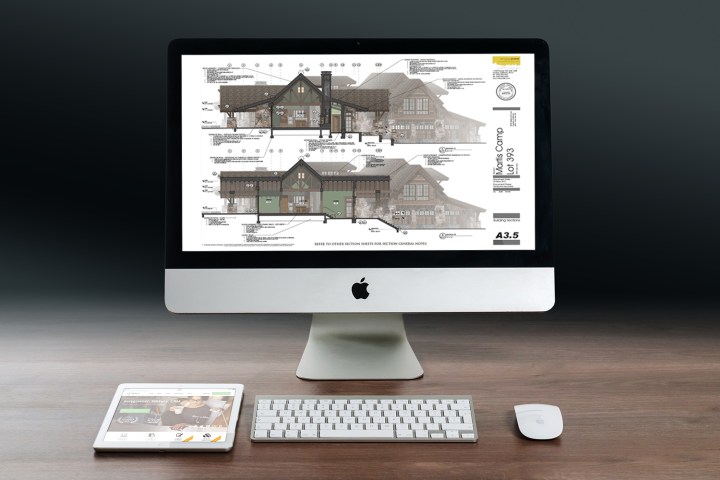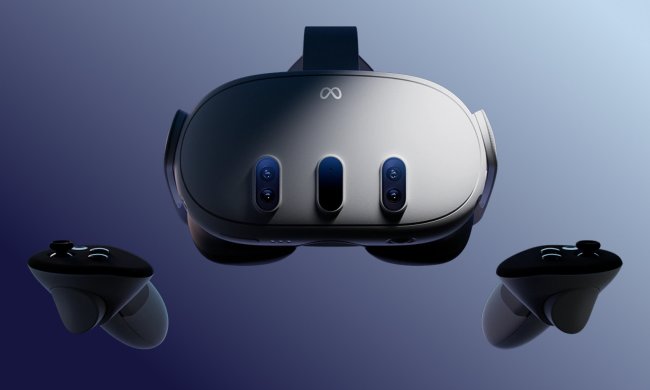Whether you are looking for the right software to fuel your latest design project or picking the best engineering program for a company or class, here’s the best 3D modeling software — and what makes them such popular picks.
Note, though, that 3D modeling software can be taxing on your system. It’s a good idea to carefully examine the required specifications for running the software in question before making a final decision. Many developers provide both a minimal and recommended set of specs. The minimal set will allow you to run the software, but depending on your computer’s configuration, you may not have access to all the features that you need. Try to focus on recommended or optimal specifications and make sure your hardware can handle it.
Blender 2.8 (Free)

Blender continues to be one of the most user-focused design programs available, especially if you’re still a little new to modeling and want a free option where you can learn, play, and then get to work once you’ve familiarized yourself with the program. Because it’s such a large, open-source project, it can do a bit of everything, allowing you to tackle modeling, rigging, animation, simulation rendering, motion tracking, full-game creation, and more. There’s a strong “by artists, for artists” philosophy behind it, which makes it particularly well-suited for independent creators and those who want a free 3D graphics tool that compares to many paid options.
Unlike some software on our list, Blender excels at multi-stage development and can handle many different steps toward a completed product. However, while you can learn a vast amount about modeling from both the software and its robust user community, it’s not easy to jump right it. Even preliminary modeling requires a bit of patience, so prepare to spend some time learning the tools — including a few of Blender’s odd control choices.
Cinema 4D ($60 per month to $3,495 for perpetual license)

Maxon’s Cinema 4D software has a tight focus on advanced 3D modeling, which makes it ideal for conceptual product design and those times when you need to add more complex layers to artistic projects. The intuitive interface is filled with detailed tools, everything has a “help” option associated with it, and the system goes through careful quality control before updates are released, making it more dependable than some alternatives.
Touted as an excellent pick for both pros and beginners alike, Cinema 4D has a wide-ranging community of users and offers an impressive array of how-to guides and tutorials. Also, users who pay for the annual Maxon Service Agreement gain free access to Cineversity, which is a training site to improve your skills with the software.
Cinema 4D’s built-in tools are also impressive, offering users tools for volumetric and parametric modeling as well as a selection of reasonably priced plugins to increase the functionality. While Maxon’s capabilities certainly don’t come cheap, those in need of easy-to-learn software capable of 3D visualization, illustration, and motion graphics will not be disappointed. You’ll also need a Maxon license to use Cinema 4D.
There’s also a basic version available for less-intensive projects, but it’s good to keep in mind that even the full version doesn’t branch out much beyond detailed 3D modeling. It’s excellent modeling software, but its limited applications make it less useful for some creators, and the free version only permits access for 42 days.
Autodesk Maya ($1,620 annually)

Autodesk’s Maya is widely considered one of the industry standards when it comes to 3D modeling software. The company has also done a lot of work to integrate tools from Autodesk Mudbox (previously from Skymatter), allowing for more deft polygon sculpting, and letting you reap the benefits of two types of modeling software from a single application. The amount of detail you can achieve in Maya is quite impressive, and the 3D modeling software is ideal for detailed texturing, rendering, lighting and modeling, along with those with an eye for animation (Maya was integral in the making of Kubo and the Two Strings, for example).
Future editions should be even better, too, given Autodesk will likely integrate more Mudbox tools. However, it should be noted that Maya is not great for those just starting as 3D artists. In addition to potentially being cost-prohibitive, the toolsets and capabilities easily exceed what the amateur or even average artist will require.
There’s a good chance that many of us may never need animation software with features like fluid simulation, solid body physics, and the ability to render cloth, hair, and even particles. On the other hand, if you plan on trying to gain a position working in VFX or for a major animation studio, 3D modeling software of Maya’s caliber may well be worth the investment.
AutoCAD ($1,521 annually)
AutoCAD is an Autodesk classic. AutoCAD’s 2D and 3D modeling are explicitly designed for engineering, architecture, and product design. Graphic designers and artists won’t find this software very useful, but engineers often learn it while pursuing their degree, making it a natural choice for many.
Subscribers get AutoCAD for Mac and Windows along with many industry-specific programs, including AutoCAD Mechanical, AutoCAD MEP, AutoCAD Electrical, AutoCAD Map 3D, AutoCAD Plant 3D, AutoCAD Architecture, and AutoCAD Raster Design (which is Windows only).
The company has also worked on updating the software actively. It has added greater customization and a slew of useful sharing tools — including an accompanying web and mobile apps — which makes it an excellent pick for companies. Opting for the free trial may be a good idea if you’re thinking about using the software professionally and want to ensure it has everything you need.
ZBrush ($895 for perpetual license)
ZBrush traditionally is used as a “sculpting” tool that lets you add more significant details after nuts-and-bolts 3D modeling. However, in recent years, several updates have come along that improve how it works and what it does. These updates include additional tools that allow creators to start building directly in the program and even apply rendering after the sculpting phase.
In addition to modeling and sculpting, users can also paint textures and create UV maps, allowing ZBrush to create 3D printed working action figures, toys, and even costumes and props to go with them. These improvements have turned ZBrush into an excellent general-purpose tool for artists who need to detail their work carefully and would prefer not to jump between expensive platforms to get it done.
While ZBrush users can manipulate millions of polygons at once to create organic structures ready for printing, the non-standard menu design and user interface are not for the faint of heart and require time and proficiency to learn thoroughly. It is also worth noting that to get the most out of this software, you will need to own or purchase a graphics tablet.
3DS Max ($1,620 annually)

For those invested in creating high-end productions that will impress the public, 3DS Max is worth a look. The software — which was used to create graphics for Assassin’s Creed, among other projects — is focused on modeling, ultra-detailed animation, and rendering via Arnold, V-Ray, Iray, and other commonplace tools. Like Autodesk’s other software, the latest updates are pushing further integration and compatibility with 3DS, while focusing on making the software as VR-friendly as possible for developers.
3DS Max is exclusive to Windows and allows users to create a product or architectural visualization and is often used to produce feature films and TV shows. While Maya offers a similarly impressive array of tools for 3D modeling, 3DS is much easier for intermediate or beginning artists. In addition to offering both procedural modeling and direct manipulation techniques, it simplifies the whole process by offering access to a vast repository of modifiers. 3D modeling students can even get the toolset for free, so it’s certainly worth considering.
SketchUp (free to $1,099 annually)

While modeling software can be notoriously tricky to master, SketchUp is designed for the real world, with features made for beginners, learners, and more flexible workplaces. The modeling software includes 3D Warehouse, which is used to store and share models with the community, as well as several extensions that add different pre-built shapes.
However, this simplicity also limits the reach of SketchUp. This program is primarily used for architectural modeling, interior design, home planning, and similar projects. There are several versions available, each of which is based on your goals for personal, professional, and even educational use.
The free 3D modeling program that runs in your web browser comes with several perks, including 10GB of storage for your designs. It allows you to view plans on mobile devices and operates with a wide variety of file types. Paid versions include unlimited cloud storage, a desktop modeling platform, headset viewing, and much more.






